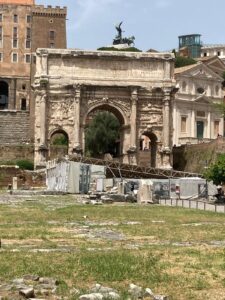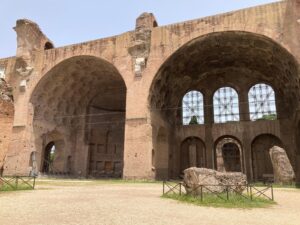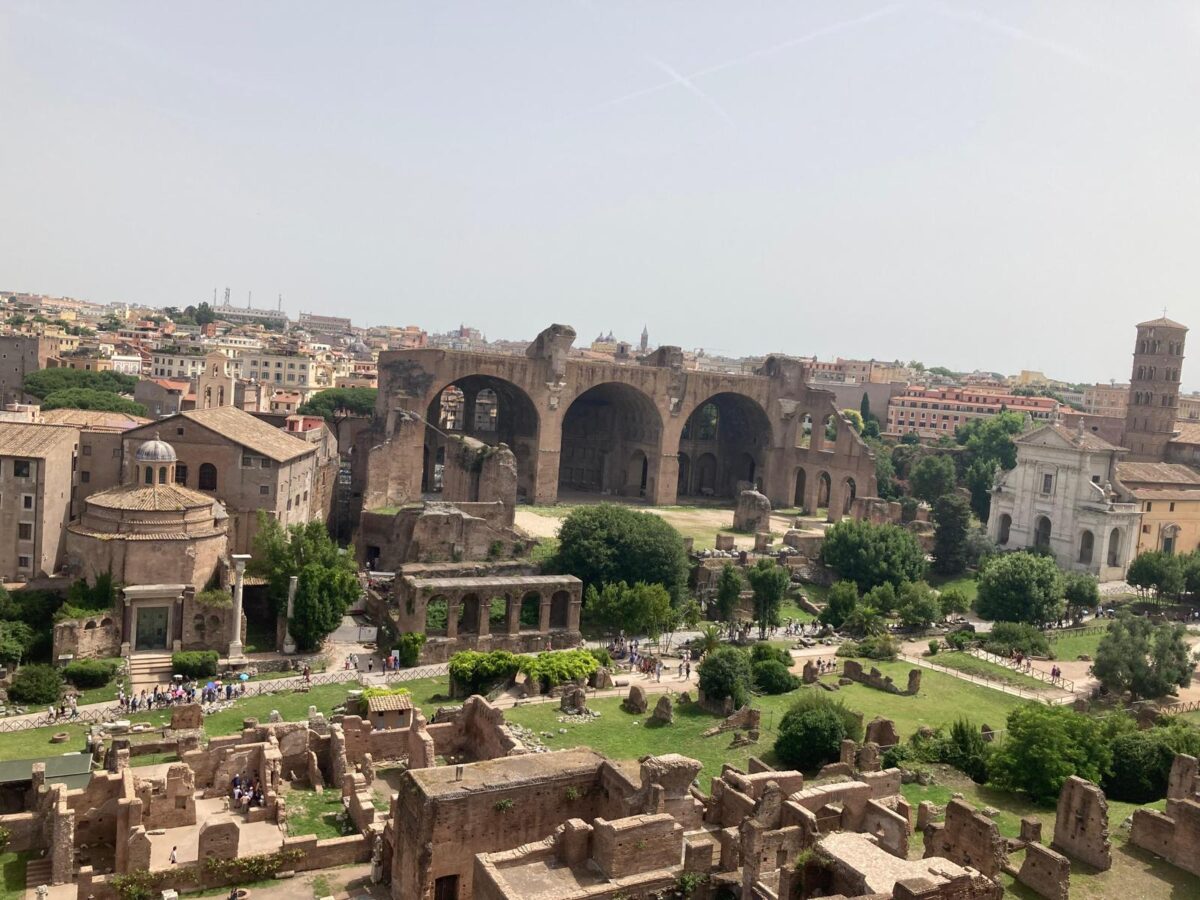Earlier this summer I had the chance to travel to Italy on a vacation that was part pilgrimage, part historical exploration. Discussing the former will come soon; today, however, I am going to discuss some of the surprising observations I had about the Forum Romana in the Eternal City.
For anyone who has taken a Classics course, whether in languages, culture, history, or archaeology, one era always stands out: the Late Roman Republic from roughly the final conquest of Carthage at the end of the Third Punic War in 146 B.C.E. to the rise of the Principate under Octavian Augustus in 27 B.C.E. The works of or about literary and historical greats from this time period fill textbooks and are the subjects of translation, debate, and discovery for millions of students. I myself learned the basics of Latin grammar translating chunks of Julius Caesar’s De Bello Gallico, labored over Cicero’s letters and orations, and even translated a few books of Vergil’s Aeneid, all from this crucial century when Romans catapulted their civilization from a power in the Mediterranean into THE power of the Mediterranean. Due to this era’s fame, and the proclivity among early archaeologists to dig and preserve edifices and artifacts thought to represent Classical literature over anything else, I thought that the preserved architecture of the Roman Forum would reflect this, with monuments and buildings from the Triumvirates or Octavian’s era saved over all else.

Surprisingly, this was not the case. As I explored the Roman Forum, I saw numerous monuments, temples, basilicas, and arches preserved from the later imperial era. The arches of Titus and Septimus Severus flanked the Forum’s entrances; the Baths of Caracalla, Domitian’s palace on the Palatine Hill (and the tunneled rampway he used to walk from it to the Circus Maximus), the Flavian Amphitheater (Colosseum), and the Basilica of Maxentius and Constantine were the marquee ruins in the Forum. Several other older sites, such as the Temple of the Vestal Virgins or the Curia where the Senate met, were there, but had been rebuilt over time. In essence, the whole area of the Roman Forum told a story in stone about Roman civilization at its height in the Second Century C.E. and its revitalization in the Fourth Century C.E. more than the history of Classical Roman literature that tells of Caesar, Pompey, Crassus, Marc Antony, Marcus Agrippa, or Octavian.
When I thought about it, however, this was in fact somewhat logical. These buildings were built later than those of the Late Republic. Rome was a dynamic, expanding city wherein emperors and Senators consistently funded and oversaw new building projects on or over the city’s old footprint to meet the city’s needs and project a leader’s legitimacy or power. Caracalla wasn’t so much concerned about what his baths destroyed of the old city so much as building them to serve the needs of Rome’s residents as a way to impress them with his generosity, wealth, and influence.

In fact, the newest, Late Antique ruins were some of the most impressive in the Roman Forum, particularly the Basilica of Maxentius and Constantine–by far the largest edifice whose ruins remain. Begun under Maxentius before he lost the civil war which Constantine won, the basilica was finished by Constantine after he became the sole ruler of the empire. What impressed me most about this ruin was not just its sheer scale; it was the fact that it was built in the Late Antique Empire, a time often seen as a period of Roman decline based on accounts from Roman literature or early pieces of Roman History. Yet, the fact that Rome’s leaders still invested in these massive building projects speaks to continued Roman durability in the Late Antique era. Yes, emperors had many incentives to build in the imperial capital as a way to project their legitimacy, but seeing these buildings still impressed upon me the reality that Maxentius mustered the resources to start a project like this when he also had to worry about paying soldiers to maintain his power in the city of Rome.
My main takeaway from exploring these ruins is that in the long durée of Roman civilization, the history of the Late Antique era is one full of a vivacity, dynamism, and growth equal to that of the Late Republic and early Principate. While I already knew that in part from reading about Roman history, it was gratifying and unforgettable to see it undeniably built into the ruins of the Roman Forum.
